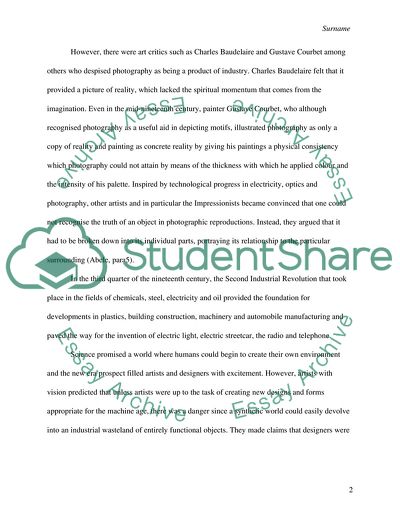Cite this document
(The Dynamic Force of Technological Progress Essay, n.d.)
The Dynamic Force of Technological Progress Essay. https://studentshare.org/technology/1722572-in-the-first-half-of-the-20th-century-artists-filmmakers-and-other-cultural-producers-had-a-love-hate-relation-to-industrial-technology-critically-analyse-two-divergent-positions-taken-to-the-machine-aesthetic-making-reference-to-no-more-than-four-s
The Dynamic Force of Technological Progress Essay. https://studentshare.org/technology/1722572-in-the-first-half-of-the-20th-century-artists-filmmakers-and-other-cultural-producers-had-a-love-hate-relation-to-industrial-technology-critically-analyse-two-divergent-positions-taken-to-the-machine-aesthetic-making-reference-to-no-more-than-four-s
(The Dynamic Force of Technological Progress Essay)
The Dynamic Force of Technological Progress Essay. https://studentshare.org/technology/1722572-in-the-first-half-of-the-20th-century-artists-filmmakers-and-other-cultural-producers-had-a-love-hate-relation-to-industrial-technology-critically-analyse-two-divergent-positions-taken-to-the-machine-aesthetic-making-reference-to-no-more-than-four-s.
The Dynamic Force of Technological Progress Essay. https://studentshare.org/technology/1722572-in-the-first-half-of-the-20th-century-artists-filmmakers-and-other-cultural-producers-had-a-love-hate-relation-to-industrial-technology-critically-analyse-two-divergent-positions-taken-to-the-machine-aesthetic-making-reference-to-no-more-than-four-s.
“The Dynamic Force of Technological Progress Essay”. https://studentshare.org/technology/1722572-in-the-first-half-of-the-20th-century-artists-filmmakers-and-other-cultural-producers-had-a-love-hate-relation-to-industrial-technology-critically-analyse-two-divergent-positions-taken-to-the-machine-aesthetic-making-reference-to-no-more-than-four-s.


